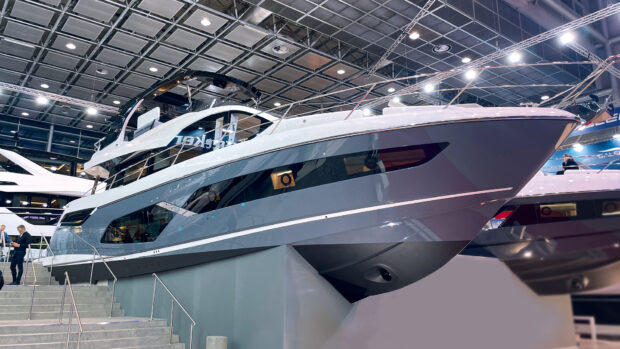MBM catches up with the great nephew of Fred Cooper who designed Miss England's hull
To coincide with our Miss England feature in our May 2011 issue, MBM caught up with Bill Cooper, great nephew of the famous Fred Cooper, to find out more about the man behind Miss England’s hull.
Bill Cooper says:
“Fred was one of three brothers who were the sons of a successful Stonemason on the Isle of Wight. Fred became a naval architect and hull designer whilst Frank (my grandfather) ran the stonemasons business with George, the other brother, a sculptor and artist. Fred came from a family of skilled men and I believe this explains his outstanding ability with hull design.
Family ties
As a child, my mother discouraged me from having anything to do with the Cooper family as my father was from “a bad lot” (he left us when I was two). This was a great shame as by the time I was of an age to make up my own mind the opportunity to get to know Fred had passed and as a young engineer myself that lost opportunity has always been a source of regret to me as I could have learned a lot from him. My own interest in Fred was rekindled when I was given a copy of Adrian Rance’s book Fast Boats and Flying Boats and the author was kind enough to put me in touch with the now defunct Motor Boat Museum at Basildon. Visiting Basildon was an eye-opener and this led to me crewing safety boats for the World Water Speed Record Attempts at Windermere and later Coniston. I also joined the Classic Motor Boat Association and bought my own small classic powerboat, a 1968 Delta built by Ray Wright, which I still use and enjoy.
Fred’s career
As well as designing the hull for Miss England and Miss England II, it was Fred who introduced Major Segrave to Michael Willcocks who became his riding mechanic. Seagrave died on 13 June 1930 in a tragic accident on Lake Windermere while trying to break the World Water Speed Record aboard Miss England II. Willcocks, who was on board at the time, survived badly injured with a fractured spine but he recovered and went on to race again. Fred went on designing boats, including designing the first in the series of Bluebird boats known as K3 for Sir Malcolm Campbell, but I believe Fred lost much of his enthusiasm on that sad day at Windermere. K3 was designed by Fred and built at Saunders Roe, East Cowes, and broke the World Speed Record on 2 September 1937 at Lake Maggiore, Italy, with a speed of 126.33 mph and again the following year at Lake Halwyl, Switzerland, at a speed of 130.9mph with Sir Malcolm Campbell at the helm.
Previous to his involvement in the design of Miss England with Hubert Scott-Pain at the British Power Boat Company, Fred designed a small, fast, stepped hull named Basileus for Jack King, which was built at Snooks yard in Bursledon, near Southampton, in the late 1920s. It was a very pretty little boat, which, despite its small scale, was at the forefront of hull design. In 1932 Jack King lent Basileus to Willcocks who raced her in the Bann 100 in Ireland. Willcocks came third despite running out of fuel – an outstanding achievement given that Basileus was fitted with only a 350cc Johnson outboard. At well under 5ft tall Willcocks was a true enthusiast with a lot of courage who carried on racing after suffering a broken spine in the accident with Miss England II. Fred Cooper was a prolific and talented designer who has never really been given the recognition that he deserved.”
http://www.youtube.com/watch?v=CiM8ZVQRY_s&feature=youtu.be









